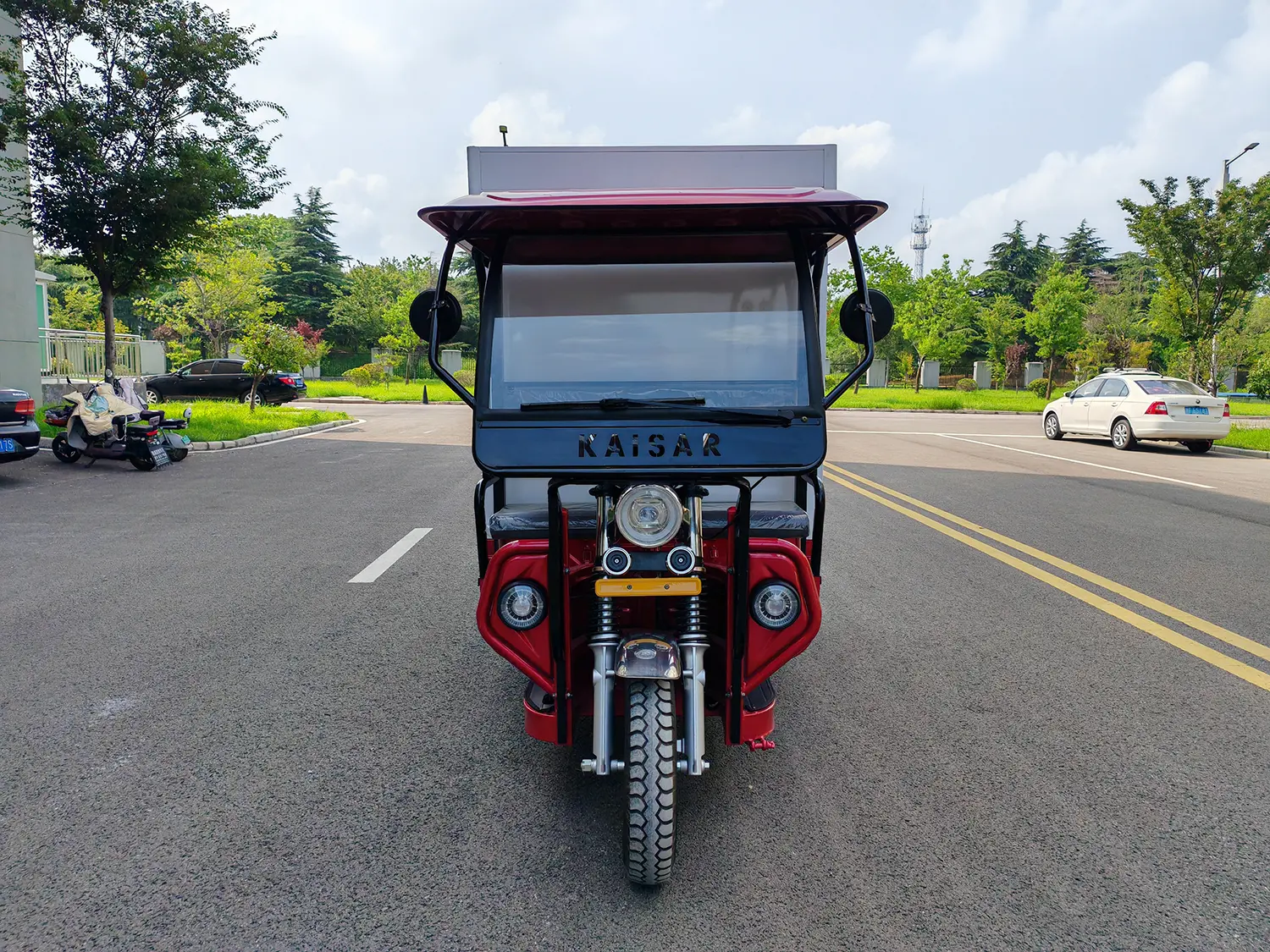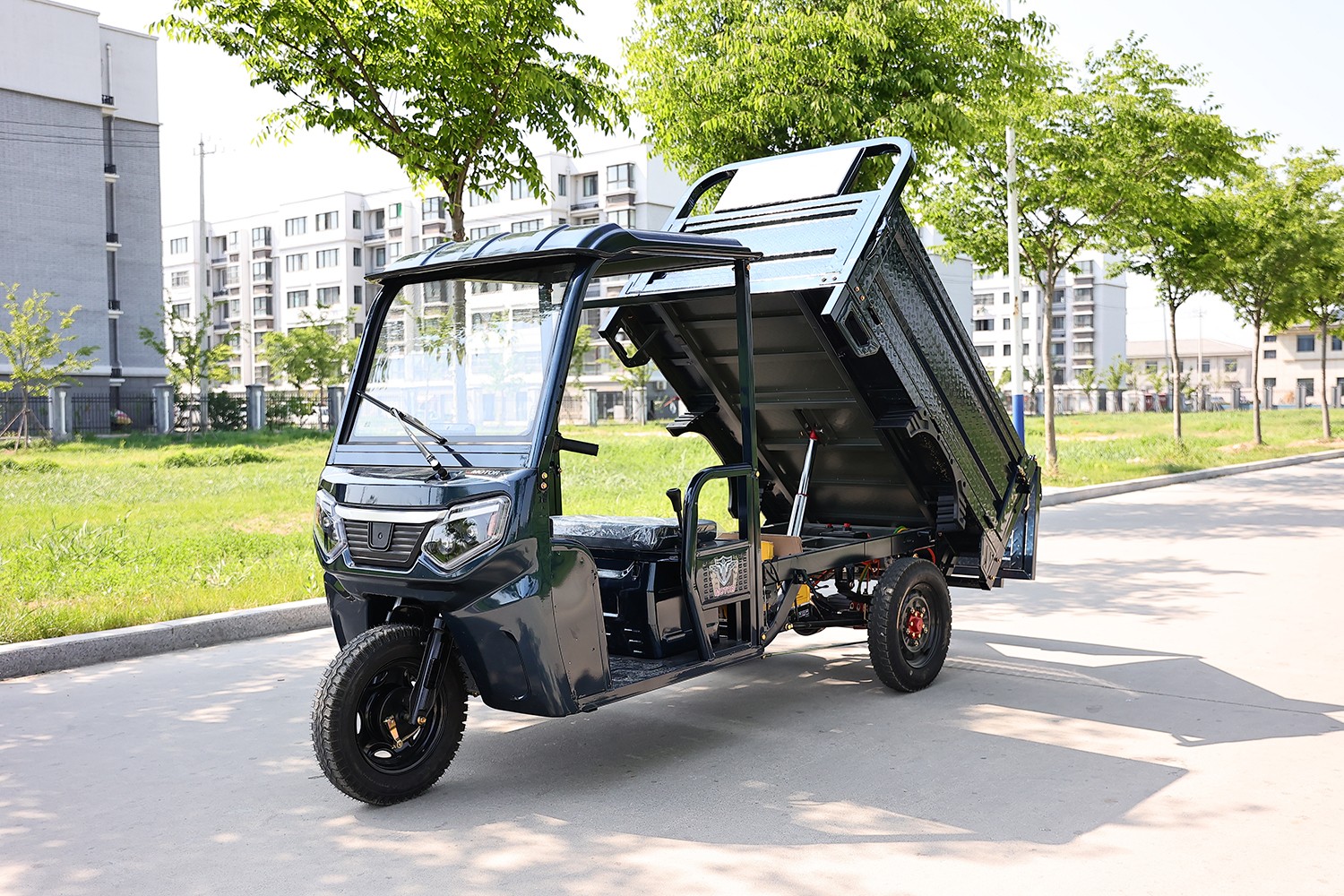As the owner of a factory specializing in electric tricycles, one question I hear constantly from potential B2B partners—from fleet managers like Mark in the USA to tourism operators in Europe—is this: "Is a trike really safer than a motorcycle?" It’s a fantastic question. The visual of a stable, three-point base naturally makes people feel more secure, but the answer isn’t a simple yes or no. The reality is that a trike and a motorcycle are two very different machines, each with its own set of safety advantages and challenges.
This article is my answer, based on years of manufacturing experience and countless conversations with riders and fleet owners. We’ll dive deep into the stability, braking, visibility, and handling differences between a three wheeled motorcycle and a traditional two-wheeler. My goal is to give you a clear, honest picture, free of marketing hype, so you can make the best decision for your business or personal ride. We will look at the facts, the physics, and the real-world scenarios that determine how safe you are on the road.
What Makes a Trike Seem Safer Than a Motorcycle?
The most immediate and obvious reason a trike feels safer is its inherent stability at a standstill. When you stop a traditional motorcycle, you must balance its weight with your own strength, planting your feet firmly on the ground. For new, older, or physically smaller riders, this can be a constant source of anxiety, especially on uneven ground or slopes. A trike, with its three points of contact, eliminates this issue entirely. You can sit comfortably at a red light without any fear that the vehicle will tip over. This feature alone significantly lowers the barrier to entry for many people who love the idea of open-air riding but are intimidated by a heavy motorcycle.
This feeling of security is reinforced by the trike’s physical presence. It has a wider frame and a more substantial look and feel. It’s often been described as part motorcycle, part car. For many, it’s a psychological comfort; it’s assumed that with three wheels, the machine is less likely to get into trouble. You don’t have to worry about low-speed drops, which are a common occurrence for even experienced motorcycle riders and can cause embarrassing and costly damage. This initial stability makes the trike an appealing option for those seeking a more relaxed and confidence-inspiring ride.
How Does the Third Wheel Impact Stability and Handling for the Rider?
That third wheel does more than just hold the trike up at a stop; it fundamentally changes the physics of how the vehicle moves and handles. A trike possesses a much lower center of gravity compared to most two-wheeled motorcycles. This stability is a huge asset in straight-line travel and during gentle curves. The three wheels grounding the vehicle make it incredibly resistant to being unsettled by crosswinds or bumps on the road surface, providing a planted and secure feel for the rider. You simply point the handlebar where you want to go, and the trike follows.
However, this is also where the most significant difference in handling emerges, and it’s a critical point for any rider transitioning from a motorcycle. A motorcycle leans into turns. This is an intuitive action that allows the rider to counteract centrifugal force and maintain balance. A trike does not lean. Instead, it handles turns like a car or an ATV. The rider must actively steer through the corner, and the forces at play will push the rider’s body towards the outside of the turn. This can feel unnatural and even alarming for someone accustomed to counter-steering and leaning. Without proper training, an inexperienced trike rider might enter a corner too fast, creating a situation where it’s difficult to maintain control. The trike itself is stable, but the rider needs to adapt to these different physics.
Do Motor Trikes Offer Better Traffic Visibility?
Absolutely. This is one of the most significant and undeniable safety advantages of a trike. The phrase "I just didn’t see a motorcycle" is a tragic and common refrain heard after a motorcycle accident. A standard motorcycle is a very narrow object, easily lost in a car’s blind spot, hidden by glare, or obscured by other traffic. A trike, by its very nature, is much larger. Whether it’s a "tadpole" design (two wheels in front) or a traditional design (two wheels in back), the wider profile makes it much harder to miss.
This better traffic visibility means that a motorist on the road who is looking for other cars and trucks on the road has a much better chance of noticing a trike. From my experience as a manufacturer, this is a top selling point for our commercial clients. Whether it’s a passenger model or you’re an Electric Cargo Tricycle, Electric Passenger Tricycle Supplier, the larger footprint is a key safety advantage. A trike occupies more of a lane, demanding more space and respect from surrounding vehicles. Many motor trikes also feature more extensive lighting, including wider-set taillights and sometimes even a center brake light, further enhancing their presence on the road. When it comes to being seen, trikes are safer.
Is Braking on a 3-Wheel Trike More Effective?
In many situations, yes. Effective braking is about two things: the power of the braking system and the amount of traction your tires have with the road. This is where a trike has a clear mechanical advantage. A standard motorcycle has two contact patches—one for the front wheel and one for the rear tire. A trike has three. This extra contact patch, combined with the vehicle’s stability, allows for more aggressive braking without the same level of fear of losing control or locking up a wheel that can plague a motorcycle rider.
Most motor trikes have their braking systems linked, so applying the foot brake or hand lever engages braking force on all three wheels simultaneously. This distributes the force more evenly and can lead to significantly shorter stopping distances, especially in wet or slippery conditions. In an emergency, a rider can apply the brake hard without having to worry about the complex task of modulating front and rear braking to avoid a skid. Advanced braking systems, like those we integrate into models like the EV5 Electric passenger tricycle, provide confidence-inspiring stopping power that is far more straightforward to use than that of a two-wheel motorcycle. This simplicity can be the difference-maker in a panic-stop situation.
Can a Rider Swerve to Avoid a Motorcycle Accident on a Trike?
This is the other side of the handling coin and a critical point where a motorcycle has an advantage. The ability to perform quick, evasive maneuvers is a cornerstone of motorcycle safety training. A skilled rider can use counter-steering to make a motorcycle lean and swerve around an obstacle—like a pothole or a car door opening unexpectedly—with incredible agility. This is one of the key emergency maneuvers that save lives.
A trike cannot perform this same action. To swerve a trike, you must turn the handlebar, much like a steering wheel. Because of its wider base and the physics involved, a trike’s ability to change direction rapidly is more limited than a nimble motorcycle. Trying to swerve too aggressively at speed can feel unstable and could even, in an extreme case, threaten to lift an inside wheel. This doesn’t mean a trike is unsafe, but it does mean the rider must adopt a different defensive strategy. Trike riders learn to rely more on their increased visibility and powerful braking, leaving more following distance and anticipating hazards further in advance, rather than relying on last-second agility.
What Does the Data from the National Highway Traffic Safety Administration Say About Trike Safety?
Getting precise, apples-to-apples data comparing trikes and motorcycles can be challenging. The National Highway Traffic Safety Administration (NHTSA) often groups three-wheeled motorcycles in with their two-wheeled counterparts in crash data. However, we can draw some logical conclusions based on general motorcycle accident statistics. For instance, the famous Hurt Report, though dated, found that in a high percentage of crashes involving a motorcycle and another vehicle, the other driver was at fault, often for violating the motorcycle’s right-of-way.
The report says that approximately 77 percent of these accidents involved the motorcycle being struck in the front. Given that a trike’s primary safety advantage is its better visibility, it is reasonable to infer that trikes may help reduce the frequency of this specific type of collision. An analysis by an auto law expert or law firm handling motorcycle injury cases would likely show that while trike accidents still happen, the scenarios might differ. For example, a rear-end collision might still be a risk, but side-impacts from cars turning left might be less frequent simply because the trike is much easier to see. The lack of specific data underscores the need for more focused research on motor trikes.
Why Are Trikes Still Risky Compared to Cars and Trucks?
It’s crucial to maintain perspective. While we can debate whether trikes are safer than motorcycles, neither offers the protection of a standard passenger car. When you ride a trike or motorcycle, you are fundamentally exposed. There is no steel cage, no roof, no seatbelts, and no airbag system. In a collision with a car or truck, the laws of physics are not in your favor. Your body is still dangerously exposed to the full force of the impact and the secondary impact with the pavement.
This is a non-negotiable reality of riding. While a trike’s stability can prevent the kind of single-vehicle accident caused by a simple loss of balance, it does little to mitigate the dangers of a crash with another vehicle. The risk of catastrophic injury when riding remains significant. This is why defensive riding, constant awareness, and wearing proper protective gear, especially a helmet, are just as critical for a trike rider as they are for someone on a chopper or a sport bike. The trike provides more stability, not invincibility.

What Are the Biggest Dangers for Trike and Motorcycle Riders on the Road?
The single greatest danger for any rider is other motorists on the road. The lack of visibility of a traditional motorcycle is a leading cause of accidents. Drivers are often conditioned to scan for larger vehicles and can simply fail to register a motorcycle in their field of vision, especially at intersections. As we’ve discussed, a trike helps mitigate this, but it doesn’t solve the problem of distracted or inattentive driving. A driver who is texting, rushing, or simply doesn’t don’t look properly before changing lanes is a threat to everyone.
Both trike and motorcycle operators face similar risks from road hazards like gravel, oil slicks, or potholes. While a trike is less likely to be completely knocked off course by a small hazard, its wider track means it’s more likely to hit it in the first place, as you can’t easily weave around it. For both types of vehicles, intersections are the most dangerous locations. This is where the majority of serious collisions occur. An accident attorney will tell you that a large portion of the motorcycle injury cases they see involve a car making a left turn in front of the oncoming motorcycle or trike.
How Does Rider Training Affect Trike and Motorcycle Safety?
Rider skill is the most important variable in the entire safety equation. A well-trained, attentive rider on a motorcycle is far safer than an overconfident, untrained rider on a trike. It’s a mistake to think that because a trike is stable, it requires less skill. It requires different skill. As mentioned, the steering dynamics are completely different. An experienced motorcycle rider has to un-learn years of muscle memory related to leaning and counter-steering.
Proper training courses for three-wheel motorcycles are essential. They teach riders how to manage the unique forces in cornering, how to properly execute emergency braking, and how to understand the vehicle’s limits. Like riding any powerful machine, proficiency comes from practice and education. A good training program will allow the rider to build confidence and develop the right habits to stay safe. Simply hopping on a trike and assuming it’s an easy-mode motorcycle is a recipe for trouble. The human factor is paramount.

What Modern Safety Features Make a Trike a Safer Choice?
As a manufacturer, I’m passionate about this topic. The engineering that goes into a modern trike can significantly enhance rider safety. It goes far beyond just adding a third wheel. We focus on building a holistic safety system, which is a key concern for clients who need reliable fleets, like those running delivery services with our Electric cargo tricycle HJ20.
Here are some key safety features to protect riders that you should look for:
| Feature | How It Improves Safety |
|---|---|
| Linked Braking Systems | Distributes brake force to all three wheels for stable, powerful stopping. |
| Anti-lock Brakes (ABS) | Prevents wheel lock-up during hard braking, allowing the rider to maintain steering control. |
| Traction Control | Prevents the rear wheels from spinning during acceleration on slippery surfaces. |
| High-Quality Suspension | A robust suspension system keeps the tires in contact with the road and absorbs bumps, improving stability and control. |
| LED Lighting | Bright, modern LED headlights and taillights make the trike significantly more visible to other drivers, day and night. |
| Ergonomic Design | A comfortable riding position with easy-to-reach controls reduces rider fatigue, which is a major factor in maintaining focus. |
When you combine these technologies, you get a vehicle that is inherently more forgiving and provides a larger margin for error. A well-built tricycle isn’t just a motorcycle with an additional wheel; it’s an integrated system designed from the ground up for stability and control.
Key Takeaways
So, is a trike safer than a motorcycle? The answer depends on the situation and the rider. A trike offers clear advantages in some areas while presenting different challenges in others.
Here are the most important points in mind:
- Stability: A trike is vastly more stable at low speeds and at a stop, eliminating the risk of tipping over. This makes it more accessible for many riders.
- Visibility: The larger size of a trike makes it significantly easier to see for other drivers, which may reduce the risk of certain types of collisions.
- Braking: With three contact patches and linked braking systems, a trike can often stop more quickly and with more stability than a motorcycle.
- Handling: A trike steers like a car and does not lean. This requires a different skill set and makes it less nimble for quick, evasive swerving compared to a motorcycle.
- Rider Exposure: No matter the number of wheels, the rider is still exposed to the elements and impact forces. Protective gear and defensive riding are non-negotiable.
- Training is Key: A trike is not an "easier" motorcycle; it’s a different vehicle. Proper training is essential to stay safe and understand its unique handling characteristics.
Ultimately, the choice between a trike and a motorcycle is a personal one. By understanding these key differences, you can choose the ride that best fits your comfort level, skills, and riding needs.
Post time: 07-05-2025




